The Weekly Anthropocene: April 2, 2025
A wolf renaissance, solar mini-grids in Zambia, the lightning rod trees of Panama, a transparent solar cell, Siamese crocs, BYD's Mega-Factory, Solein scaling up, 736,000 sandhill cranes, and more!
Europe
A recent study calculates that wolves (Canis lupus) continue their epic comeback across the continent of Europe, with the estimated population increasing by a striking 58% in a decade from an estimated 12,000 in 2012 to at least 21,500 in 2022, with about 19,000 wolves in European Union member states.
Many countries have seen rapid growth in their wolf populations starting from near-zero; Germany saw an increase from just one wolf pack in 2000 to 184 packs and 47 pairs totaling over 1,000 individuals in the 2022-23 period that this study analyzed — and the latest data makes it 209 wolf packs. Spectacular news!
The study also calculates that on average, European livestock still face just a 0.02% chance of becoming wolf prey, which has led to many political dramas but amounts to a relatively tiny economic cost. Wolf benefits including ecotourism, ecosystem engineering via regulating grazing (à la the classic Yellowstone example) and reducing deadly wildlife/car collisions are harder to quantify but likely substantial1.
The “big bad wolf” of deep-rooted human fears is being (overall) welcomed back to Europe. A truly epic example of human/wildlife coexistence in the Anthropocene!
Zambia
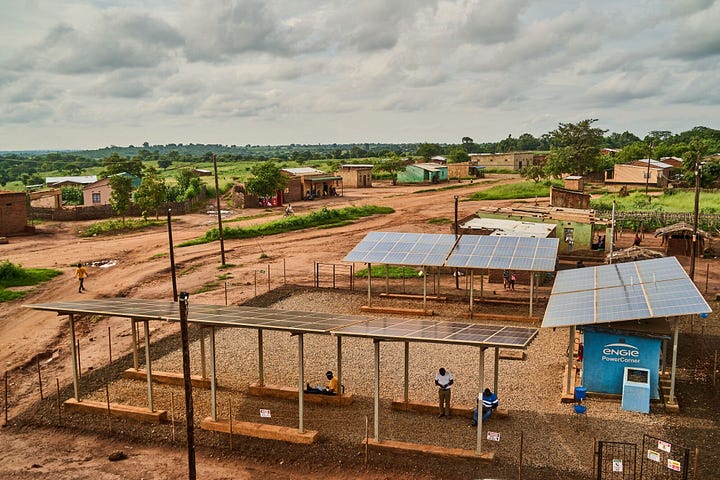
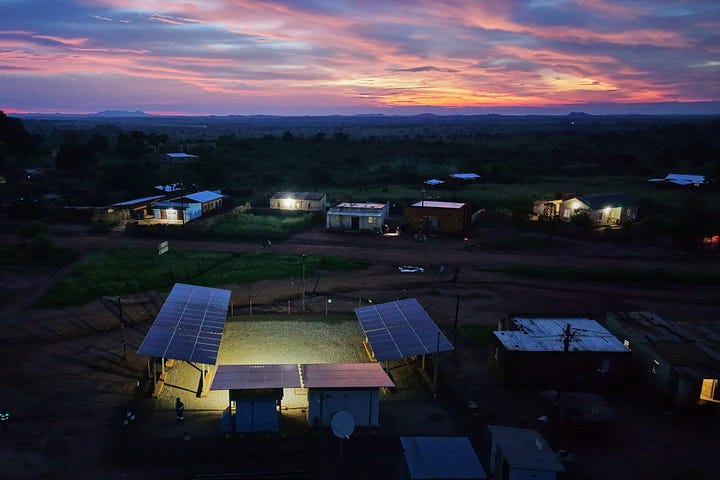
As the solar power build-out across Africa hits an “inflection point” of rapid growth, Zambia is now planning to bring electricity to 1,000 villages with solar mini-grids over the next few years (up from just 45 solar mini-grids now), and hopes to install 200 by the end of 2026. Villages like Chitandika that are already benefiting from solar mini-grids have seen an explosion of new projects from schools to welding shops to grocery stores to nightclubs, all made possible by the arrival of electricity. Great work!
Panama
An astounding new study has found that Dipteryx oleifera trees in the forests of Panama appear to benefit from being struck by lightning and may have evolved their great height and wide crowns to act as biological lightning rods. Their survival rates are improved by attracting repeated lightning strikes over their long lifespans that can kill off both liana vines growing on the tree and nearby competitor trees of other species. Nature’s endless forms most beautiful and most wonderful continue to amaze!
Denmark
The EU-funded CitySolar project working in Denmark has invented a pioneering transparent solar cell, achieving a new world record for transparent solar with commercial-grade efficiency rates. Their tandem solar cell includes a perovskite layer that absorbs near-ultraviolet light and an organic2 layer that absorbs near-infrared light, letting visible light pass through. The materials are affordable, and the team is already in talks with industry partners. Very soon, ordinary windows and the giant glass facades of skyscrapers could be generating clean power! Great work.
Cambodia
In March 2025, ten captive-bred Siamese crocodiles (Crocodylus siamensis) were released into Virachey National Park in Cambodia, the latest step in years of dedicated work. Siamese crocodiles are critically endangered, with an estimated less than 1,000 individuals in the wild, but their survival prospects have been on a substantial upswing lately! The species was feared extinct until its rediscovery in 2000, but strong conservation efforts began quickly. 206 crocodiles were released into the wild over the last few decades, and the captive-breeding center hatched a record-high 180 young crocodiles last year — moving in the right direction. Brilliant work!
China
BYD of China is already the world’s leading EV company by any metric; they’re producing more cars, making more money, and developing more advanced battery technology than previous industry leader Tesla. Now, their new under-construction Mega Factory in Zhengzhou is planned to cover 50 square miles (bigger than the U.S. city of San Francisco!) and to produce one million electric cars each year. Just…WOW.
Grenada
For years now, massive amounts of sargassum seaweed have been washing up and rotting on the beaches of Grenada and several other Caribbean islands, likely due to climate change. Now, a multitude of companies and individuals are finding new uses for it, including crop fertilizer (with hopes for an export market), a fuel source that can be broken down into an easily burnable form by a biodigester (a large-scale facility is being built to help replace expensive imported diesel on the island!), and potentially even feedstock for the nascent bioplastics field. The Grenadan prime minister is working with the EU on a goal to collect 10,000 tons of sargassum by 2026, and inviting more companies to come to Grenada to make use of it. Excellent work!
Finland
Startup Solar Foods’ revolutionary new EU-funded Solein protein powder, a highly exciting “food made from air” technology long covered by this newsletter that uses microbial fermentation (similar to how beer is brewed) to convert carbon dioxide into human-edible protein powder, is now scaling up fast! The company has signed MOUs with two international customers to produce at least 6,000 tonnes of Solein per year, and is discussing a potential new industrial-scale investment plan to build a Factory 02, Factory 03, and Factory 04 (to join their already existing Factory 01). These three new facilities would together produce 50,000 tonnes of Solein per year. Furthermore, Finnish food company Fazer has unveiled three new protein snack products made with Solein (a chocolate protein shake, a banoffee protein shake, and a chocolate-coated snack bar), Japanese company Ajinomoto is introducing three flavors of ice cream with Solein proteins for the Singapore market, and partner Superb Food is planning a Solein product launch in the U.S. soon. Regulatory novel food approval for Solein in the EU is currently expected by 2026.
This is an incredibly historic moment — humanity is beginning to get industrial-scale production of calories from a source not ultimately dependent on photosynthesis for the first time in history. Solein can be produced with just water, air and clean electricity anywhere on Earth (or beyond). It has about 1% of the environmental impact of beef. The potential reductions in land use, water use, and carbon emissions from using it as a major food ingredient are gigantic. World-changing developments!
United States
Though cruel, incompetent, and monstrously destructive gangsters run the executive branch, hardworking ordinary Americans are still striving to build a brighter future.
Utility-scale batteries are transforming the world’s grids by moving clean electrons across time to when they’re most needed - but the worldwide battery boom is also enabling home-scale battery storage that empowers individuals and families to manage their own power. In the United States, home battery storage deployments increased by 64% in 2024, reaching a total of half a million homes and over 3,000 megawatt-hours of electricity storage. Let’s keep this going!
Grist has published an excellent new guide to critical minerals, the best overview for general audiences that I’ve yet seen about these key resources for the cleantech age.
Researchers at the University of Notre Dame in Indiana have discovered that the already FDA-approved drug nitisinone, developed as an enzyme blocker to help cure certain rare genetic diseases, makes human blood deadly to mosquitoes. The potential as a vital extra shield to stop the spread of mosquito-borne diseases in a warming world is manifest — and if nitisinone becomes widely produced, it’ll be much cheaper to access for people with rare diseases as well!
A all-time record-high 736,000 sandhill cranes (Antigone canadensis) were counted along the Platte River in Nebraska at the peak of their spring migration in mid-March 2025 - and that’s likely an underestimate! Encouragingly, there are still no signs of the deadly H5N1 bird flu global avian pandemic in these flocks. Sandhill cranes are one of the oldest bird species on Earth, and range as far as Siberia and Mexico. Decades of conservation efforts are paying off in perpetuating these natural wonders!
Solar panels are being built over irrigation canals in California, producing a double benefit for Anthropocene Earth by generating clean electrons while reducing evaporation. The Project Nexus pilot stage now building solar arrays over two canals, one 20 feet wide and one 110 feet wide, should be complete by the end of 2025, and the state government is already collaborating with researchers and the private sector to scale up the solar canal idea further. The potential is immense: California alone has over 4,000 miles of irrigation canals, and a recent study calculated that if appreciable portions were covered with solar arrays it would provide 13 GW (13,000 MW) of new electricity-generating capacity and power 2 million homes while saving up to 63 billion gallons of water. A win-win solution to be accelerated as fast as possible!
The flightless Appalachian grasshopper (Appalachia hebardi) was thought to be extinct, with its last documented sighting in 1946. Then, some citizen science observations on the world-leading iNaturalist app (check it out yourself!) raised hope that it might still exist in the Shenandoah Valley of Virginia. Now, after intense surveys, field zoologist Andrew Rapp has managed to capture one alive, confirming that the species still lives. Great news!
This writer would guess that wolf benefits in Europe also include preventing wildlife pandemics such as the USA’s “zombie deer disease,” slowing the spread by quickly predating on weaker and sicker individuals in a herd.

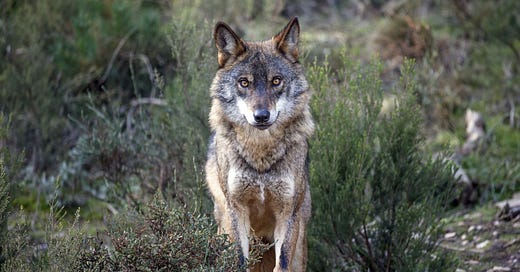



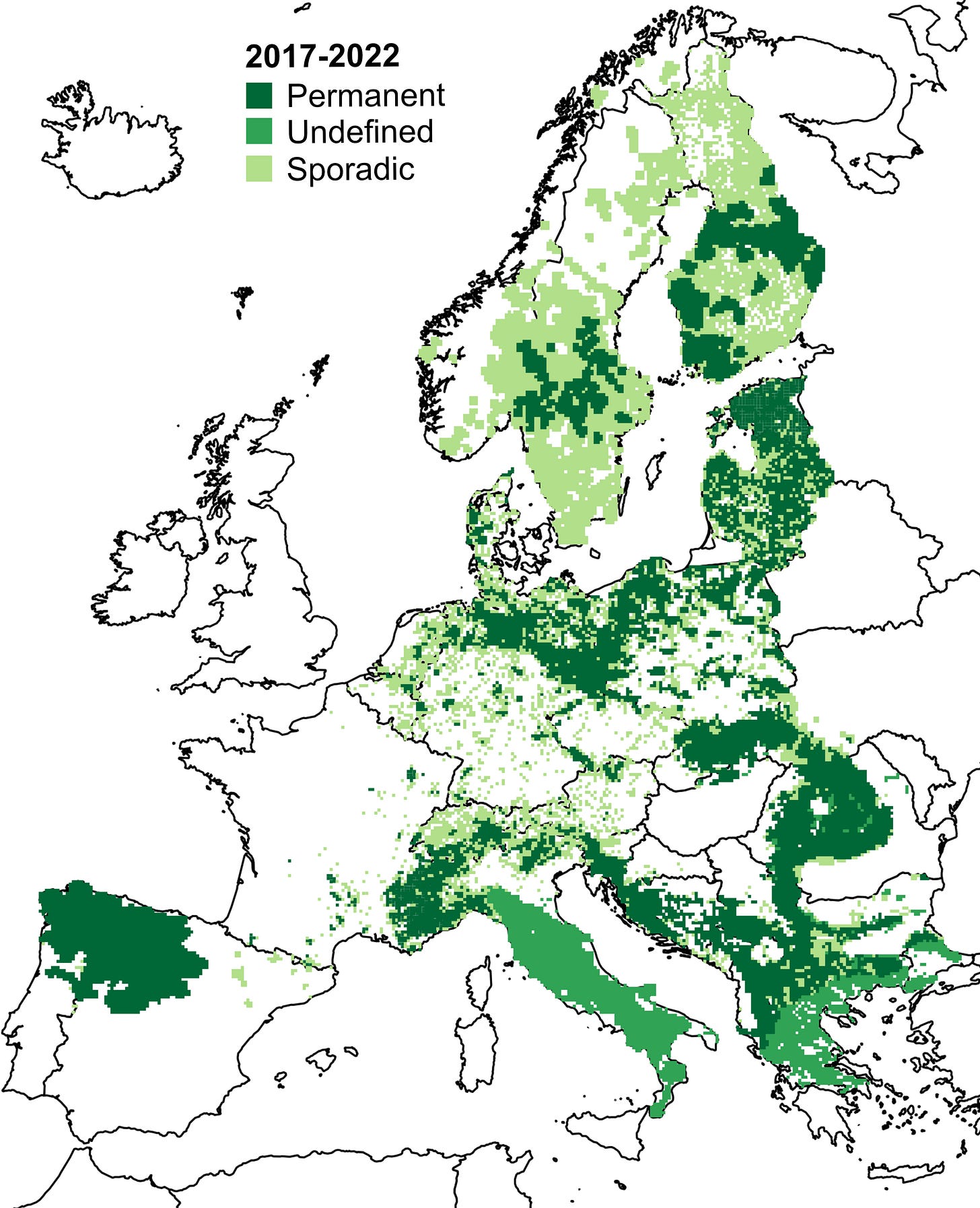
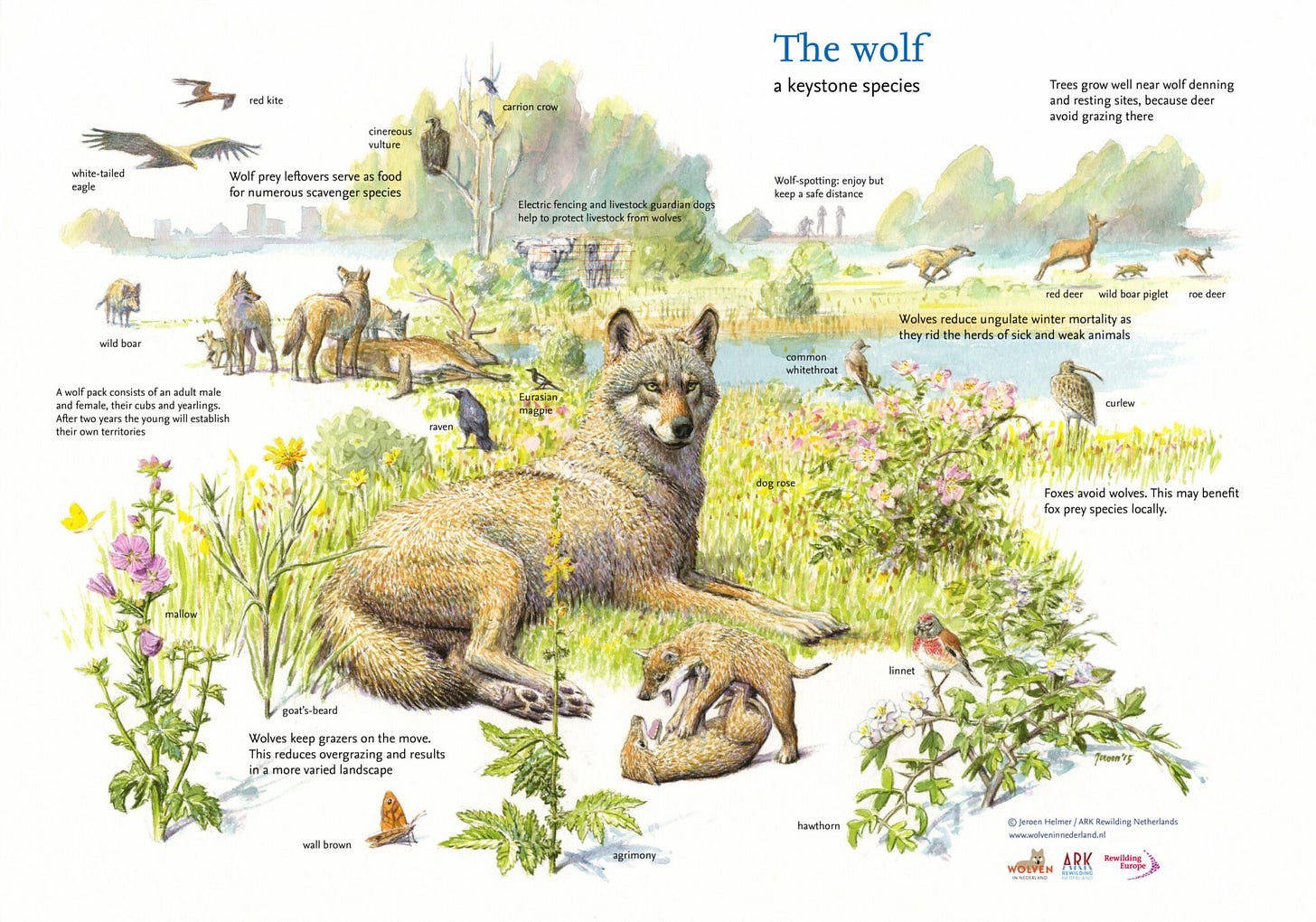
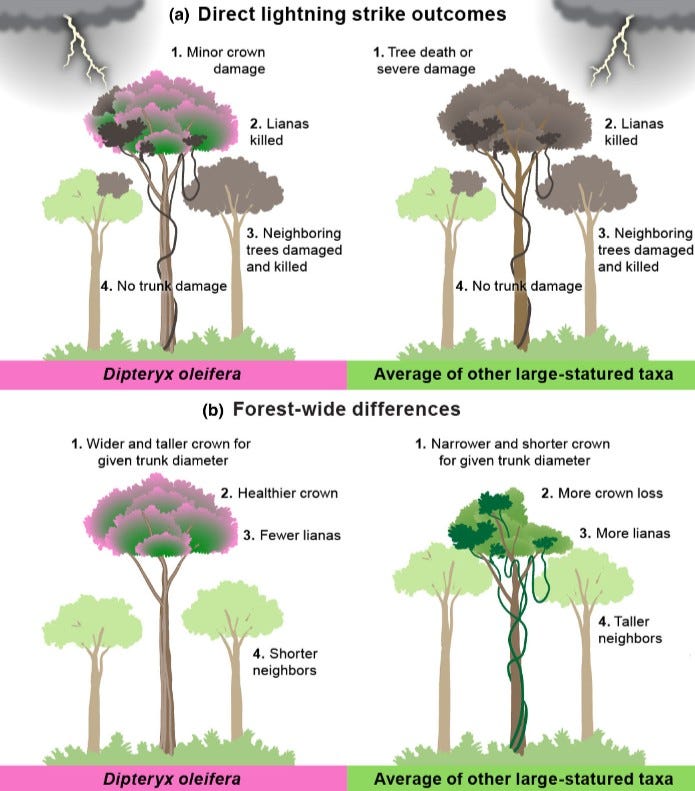
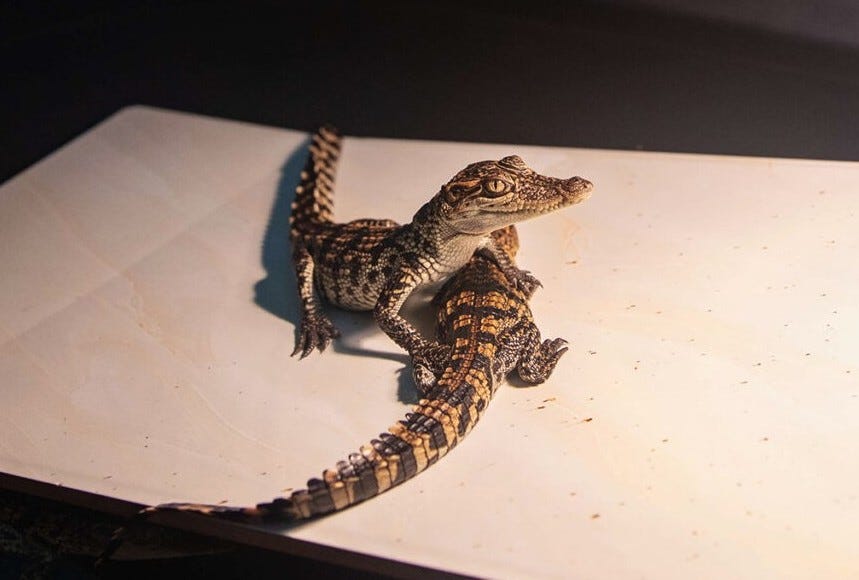

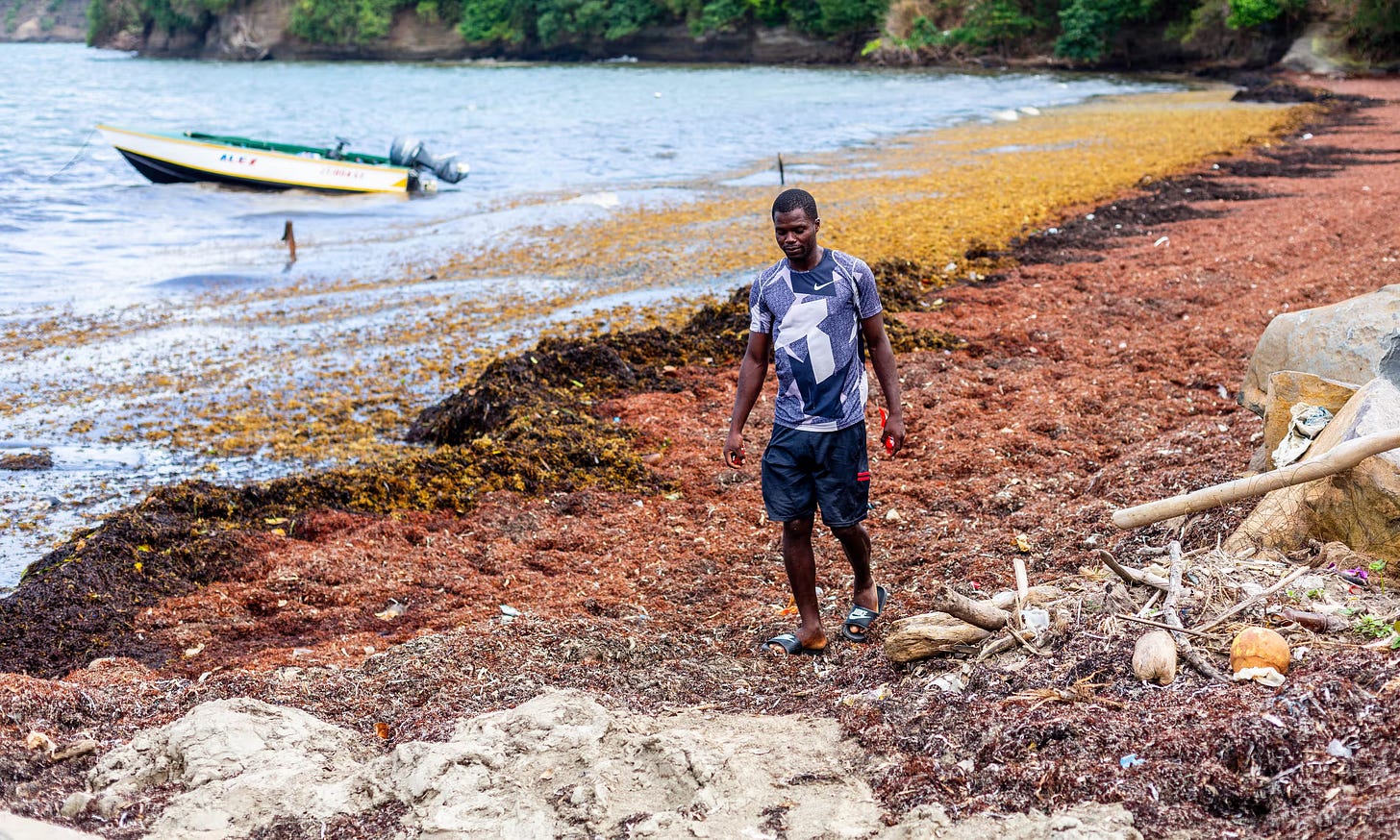


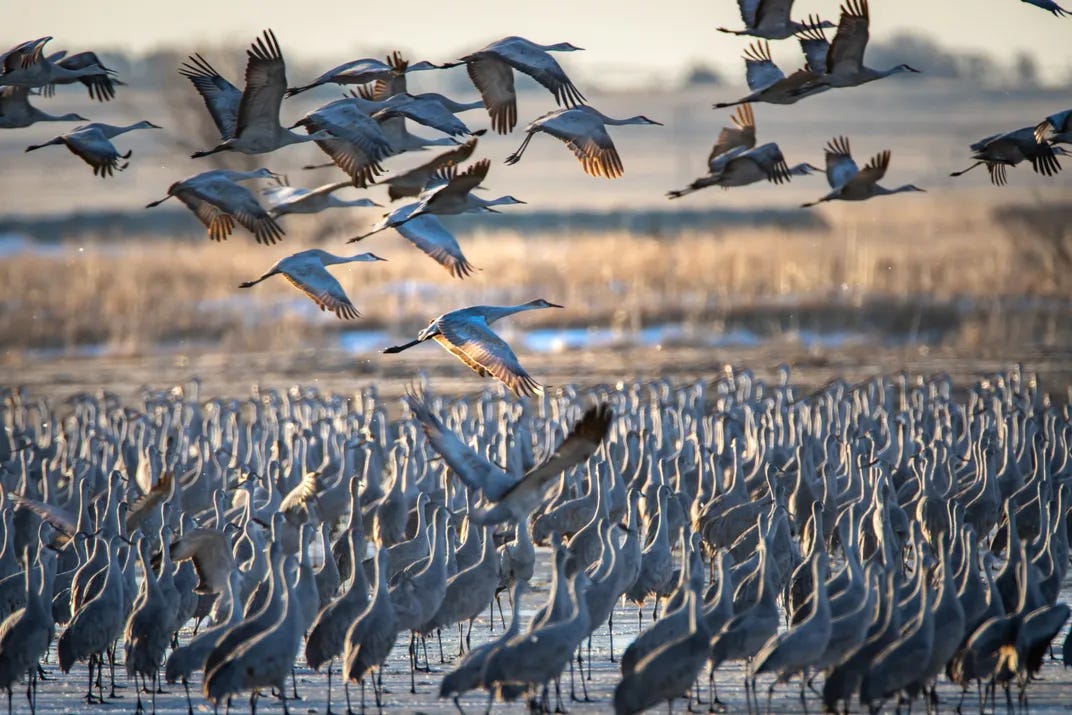
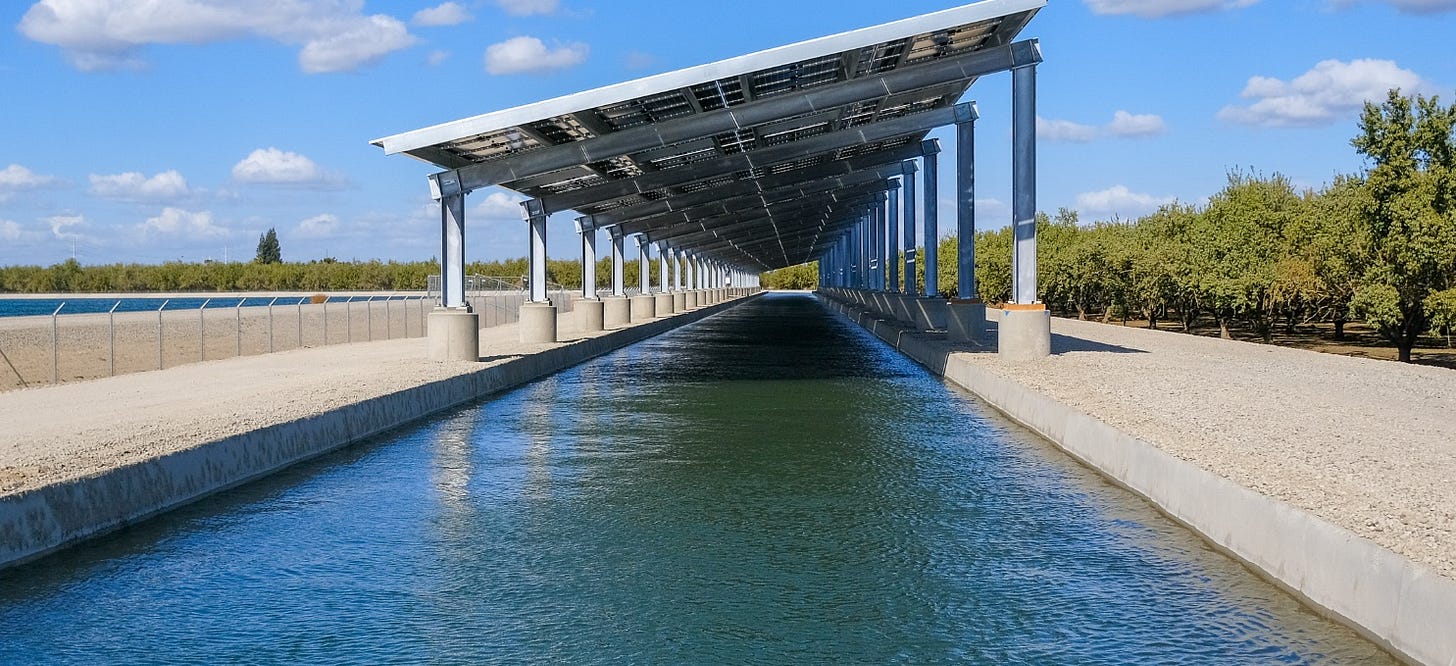
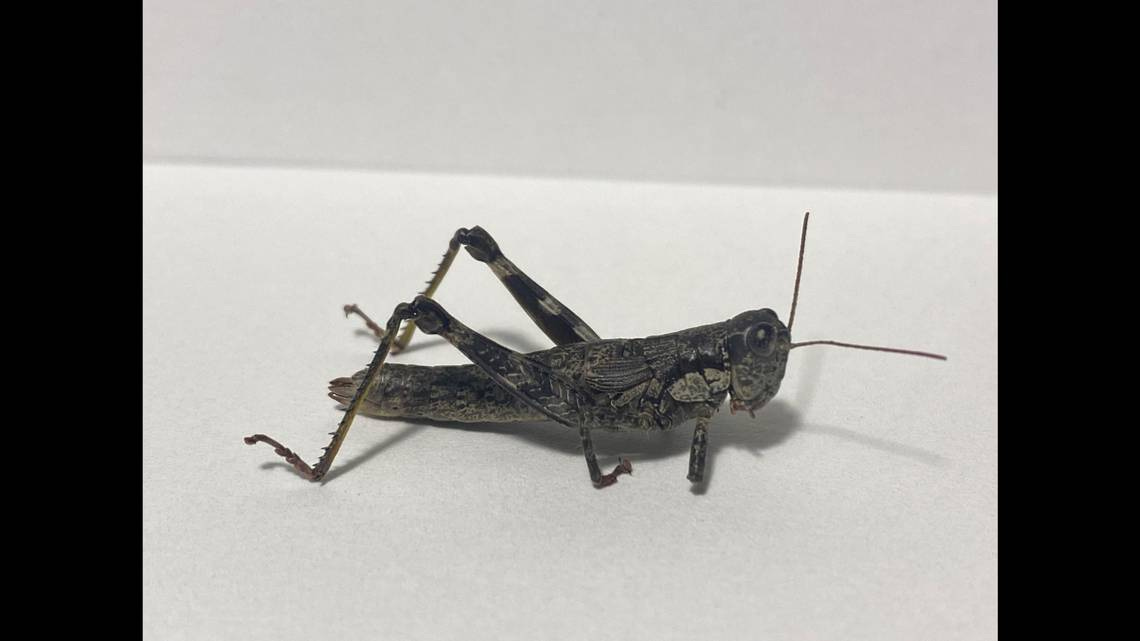
Those solar cells being developed in Denmark are wonderful as is China's BYD build out. It's also good to hear about the Sandhill cranes. Did you know China and France recently signed a biodiversity accord?
For what it’s worth, the classic Yellowstone example is neither as classic or exemplary as we think. There’s no question that wolf reintroduction has a whole host of positive ecological effects, and I’m team wolf all the way, but the straight-ahead trophic cascade narrative that made its way into the popular (and Wikipedia) consciousness is a tremendous oversimplification that focuses too closely on wolf-elk interaction and more or less ignores direct habitat engineering by, among other critters, beavers. A mentor of mine beat it into my head that no big thing happens for one reason in an ecosystem. How we embrace that kind of complexity while also pushing for the kind of political action (which requires a clear-cut narrative, like the old Yellowstone wolf story) remains an open question.
Thanks as always for your newsletter! Love this publication.